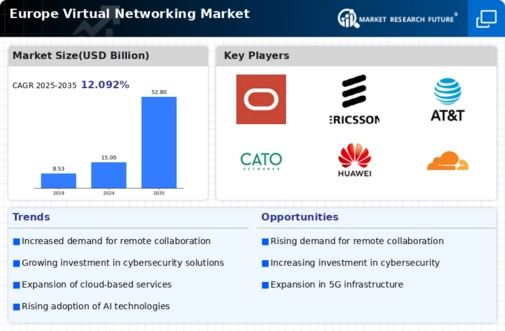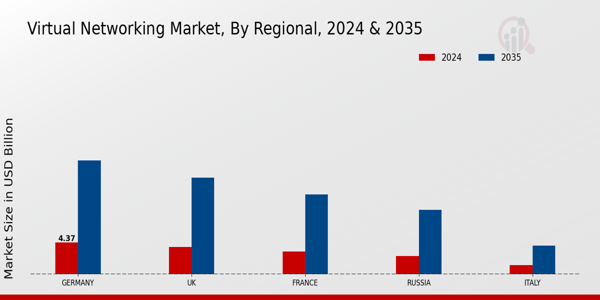The Europe Virtual Networking Market has become increasingly competitive as businesses prioritize digital transformation and remote connectivity solutions. This market leverages innovative technologies to offer agile and scalable networking solutions, enabling organizations to optimize operations and enhance user experiences. Key players are continually advancing their offerings through strategic partnerships, acquisitions, and the introduction of new features. Market dynamics are influenced by factors such as regulatory changes, emerging technologies, and evolving customer needs, which drive organizations to adopt virtual networking solutions to maintain their competitive edge.
As demand escalates for enhanced connectivity and seamless communication infrastructure, the competitive landscape is characterized by collaboration among service providers, the incorporation of cloud services, and a focus on delivering fulfilling customer experiences while addressing performance and security concerns.Oracle has a robust presence in the Europe Virtual Networking Market, bolstered by its strong commitment to delivering cloud-based solutions. The company's strengths lie in its comprehensive portfolio, which includes virtual networking products designed to optimize network management and enhance security. Oracle's ability to integrate its virtual networking solutions with other cloud services enables organizations to achieve seamless data flow and improved operational efficiency, catering specifically to the diverse needs of European clients.
The company focuses on research and development, continually investing in new technologies to keep pace with rapid market changes, thus maintaining its competitive position. Its strong brand reputation, combined with strategic relationships with local partners, enhances Oracle's ability to serve a diverse clientele in Europe, solidifying its position in this evolving market.Ericsson has established itself as a key player in the European Virtual Networking Market through its extensive offerings in telecommunications and networking solutions. The company provides a range of products and services aimed at enhancing connectivity, automation, and digitalization, which are crucial for modern enterprises operating in Europe.
Its strengths lie in its advanced technology capabilities, including a strong emphasis on 5G solutions and network slicing, which elevate the performance and flexibility of virtual networks. Ericsson has actively pursued mergers and acquisitions to expand its portfolio and strengthen its market position, enabling it to address the increasing demand for virtual networking solutions in the region. By maintaining strategic partnerships with telecom operators, Ericsson ensures a strong market presence and continued innovation, allowing it to stay ahead of the competition while contributing to the growth and maturity of the virtual networking landscape in Europe.























Leave a Comment